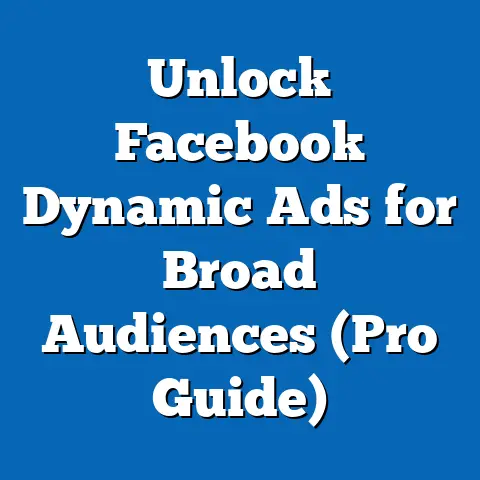Boost Visibility with Facebook Search Results Ads (Pro Strategies)
Flooring, to me, isn’t just about what you walk on; it’s the foundation of a room’s aesthetic, the silent storyteller of your home’s narrative. Think about it: the warm, inviting embrace of a plush carpet, the sleek sophistication of polished concrete, or the timeless elegance of hardwood. Each choice speaks volumes, transforming a space from merely functional to a personalized work of art.
I’ve seen firsthand how flooring trends evolve, mirroring broader shifts in design and lifestyle. Sustainability is huge right now, with options like bamboo and reclaimed wood gaining popularity. Then there’s the rise of luxury vinyl tile (LVT), offering durability and style without breaking the bank. And who can forget the classic appeal of ceramic and porcelain tile, now available in endless patterns and textures?
But even the most beautiful flooring needs to be discovered. In today’s digital landscape, businesses in the flooring niche need effective marketing strategies to stand out. That’s where Facebook Search Results Ads come in. They offer a powerful way to connect with potential customers actively searching for flooring solutions, making them a game-changer for boosting visibility and driving sales.
In this guide, I’ll share proven strategies to help you leverage Facebook Search Results Ads to elevate your flooring business. We’ll dive deep into keyword targeting, compelling ad copy, audience segmentation, performance optimization, and even how to harness the power of user-generated content.
1: Understanding the Power of Facebook Search Results Ads
Facebook Search Results Ads are a unique breed within the Facebook advertising ecosystem. Unlike traditional ads that appear in users’ newsfeeds, these ads are triggered by specific searches conducted within Facebook’s search bar. Think of it as Google Ads, but within the Facebook environment.
When someone types “best hardwood flooring near me” or “affordable tile installation,” your ad can appear directly in their search results. This placement is incredibly powerful because you’re reaching people actively looking for flooring solutions at the exact moment they need them.
Why is visibility so crucial, especially for niche markets like flooring? Because consumers often start their buying journey online, researching options and comparing prices before ever stepping foot in a store. If your business isn’t visible in these initial searches, you’re missing out on a massive opportunity.
Consider this: a recent study showed that 88% of consumers research online before making a purchase in a physical store. And according to Facebook’s own data, search is a vital part of the discovery process, with millions of searches happening daily on the platform.
I’ve seen firsthand how effective these ads can be. I once worked with a small flooring company that was struggling to compete with larger retailers. By implementing a targeted Facebook Search Results Ads campaign, they saw a 30% increase in website traffic and a 15% boost in sales within just a few months.
Key Takeaway: Facebook Search Results Ads offer a highly targeted way to reach potential customers actively searching for flooring solutions on Facebook. This increased visibility can lead to significant gains in website traffic and sales.
2: Setting the Stage for Success with Targeted Keywords
Keyword research is the cornerstone of any successful search-based advertising campaign, and Facebook Search Results Ads are no exception. You need to understand the language your potential customers are using when searching for flooring solutions.
I always start by brainstorming a list of relevant keywords. Think about the different types of flooring you offer (hardwood, tile, carpet, LVT), the services you provide (installation, repair, refinishing), and the needs you address (eco-friendly, pet-friendly, waterproof).
Next, I use keyword research tools like Google Keyword Planner, SEMrush, or Ahrefs to identify high-performing keywords with sufficient search volume and low competition. These tools can also help you discover long-tail keywords – longer, more specific phrases that potential customers might use.
For example, instead of just “hardwood flooring,” a long-tail keyword might be “best hardwood flooring for high traffic areas” or “affordable hardwood flooring installation in [your city].” Long-tail keywords often have lower search volume but higher conversion rates because they target a more specific need.
Here are some examples of effective keywords specific to the flooring niche:
- General: flooring, floor installation, floor repair, flooring contractors
- Specific Types: hardwood flooring, tile flooring, carpet, laminate flooring, vinyl flooring, epoxy flooring, bamboo flooring, cork flooring, reclaimed wood flooring
- Styles: modern flooring, rustic flooring, contemporary flooring, traditional flooring
- Needs: waterproof flooring, pet-friendly flooring, eco-friendly flooring, durable flooring, affordable flooring
- Services: flooring installation cost, hardwood floor refinishing, tile repair services, carpet cleaning services
Once you’ve identified your target keywords, it’s crucial to incorporate them strategically into your ad copy. Use them in your headlines, descriptions, and even your call-to-action buttons. This will signal to Facebook that your ad is relevant to the user’s search query, increasing your chances of appearing in the search results.
Key Takeaway: Thorough keyword research is essential for targeting the right audience with Facebook Search Results Ads. Use a combination of general and long-tail keywords in your ad copy to enhance relevance and attract qualified leads.
3: Crafting Compelling Ad Copy
Your ad copy is your chance to make a strong first impression and convince potential customers to click on your ad. It needs to be clear, engaging, and persuasive.
I always start by highlighting the unique selling propositions (USPs) of your flooring products or services. What sets you apart from the competition? Do you offer superior quality, competitive pricing, exceptional customer service, or a wide selection of styles?
For example, if you specialize in eco-friendly flooring, emphasize the sustainability and health benefits of your products. If you offer professional installation services, highlight your expertise and attention to detail.
Here are some examples of high-converting ad copy tailored for different flooring types:
- Hardwood Flooring: “Transform your home with the timeless elegance of hardwood. Expert installation and a wide selection of styles. Get a free quote today!”
- Tile Flooring: “Durable and beautiful tile flooring for kitchens, bathrooms, and more. Waterproof and easy to clean. Shop our collection now!”
- Carpet: “Experience the comfort and warmth of plush carpet. Stain-resistant and pet-friendly options available. Schedule a free consultation!”
- LVT: “Affordable luxury with our stunning LVT flooring. Durable, waterproof, and easy to install. Browse our latest designs!”
Emotional triggers can also be powerful tools for persuading potential customers. Appeal to their desire for a beautiful home, a comfortable living space, or a wise investment.
And don’t forget the call to action (CTA)! Tell people exactly what you want them to do, whether it’s “Shop Now,” “Get a Free Quote,” “Learn More,” or “Call Today.” Make your CTA clear, concise, and compelling.
Visuals are equally important. Choose high-quality images or videos that showcase your flooring products in their best light. Show beautiful installations, before-and-after transformations, or close-up details of textures and patterns.
Key Takeaway: Crafting compelling ad copy involves highlighting your unique selling propositions, appealing to emotional triggers, and using clear calls to action. Pair your copy with high-quality visuals to create a powerful and engaging ad experience.
4: Targeting the Right Audience
Facebook’s audience targeting capabilities are incredibly granular, allowing you to reach specific demographics, interests, and behaviors. This is where you can really fine-tune your campaigns to target the people most likely to be interested in your flooring products or services.
I always start by defining my ideal customer. Who are they? What are their demographics (age, gender, location, income)? What are their interests (home improvement, interior design, DIY projects)? What are their behaviors (recently moved, renovating their home, looking for contractors)?
Facebook allows you to target people based on these criteria and more. You can also build custom audiences based on your existing customer data. For example, you can upload a list of your past customers’ email addresses or phone numbers, and Facebook will match them to users on the platform.
Another powerful targeting option is lookalike audiences. This allows you to reach new customers who share similar characteristics with your existing clients. Facebook analyzes your customer data and identifies patterns and traits, then finds other users who match those patterns.
Segmenting your audience based on specific flooring needs or preferences can also be highly effective. For example, you might create separate campaigns for homeowners looking for waterproof flooring, pet owners seeking durable carpet, or businesses in need of commercial-grade tile.
By tailoring your ads to specific audience segments, you can create a more personalized and relevant ad experience, which can lead to higher click-through rates and conversion rates.
Key Takeaway: Facebook’s audience targeting capabilities allow you to reach specific demographics, interests, and behaviors. Use custom audiences and lookalike audiences to target potential customers who are most likely to be interested in your flooring products or services.
5: Analyzing and Optimizing Ad Performance
Tracking your ad performance is essential for understanding what’s working and what’s not. Facebook Ads Manager provides a wealth of data and insights that can help you optimize your campaigns for better results.
I always monitor key metrics such as:
- Click-Through Rate (CTR): The percentage of people who see your ad and click on it. A high CTR indicates that your ad copy and visuals are engaging and relevant.
- Conversion Rate: The percentage of people who click on your ad and complete a desired action, such as filling out a form, making a purchase, or scheduling a consultation. A high conversion rate indicates that your landing page is effective and your offer is compelling.
- Return on Ad Spend (ROAS): The amount of revenue you generate for every dollar you spend on advertising. A high ROAS indicates that your campaign is profitable.
- Cost Per Click (CPC): The average amount you pay for each click on your ad. Monitoring CPC helps you understand the efficiency of your targeting and bidding strategies.
- Cost Per Acquisition (CPA): The average amount you pay to acquire a new customer. CPA is a key metric for measuring the overall effectiveness of your campaign.
A/B testing is another crucial aspect of ad optimization. This involves creating multiple versions of your ad with different headlines, descriptions, visuals, or CTAs, and then testing them against each other to see which performs best.
For example, you might test two different headlines to see which generates a higher CTR. Or you might test two different images to see which drives more conversions.
Based on the performance data you collect, you can iterate on your campaigns and make adjustments to improve your results. This might involve refining your keyword targeting, tweaking your ad copy, or experimenting with different audience segments.
Key Takeaway: Regularly track your ad performance metrics and use A/B testing to identify what’s working and what’s not. Iterate on your campaigns based on performance data to continually improve your visibility and engagement.
6: Leveraging User-Generated Content and Reviews
Social proof is incredibly powerful in the flooring industry. Potential customers want to see real-world examples of your work and hear from satisfied clients before making a decision.
User-generated content (UGC) – photos, videos, and testimonials created by your customers – can be a valuable asset for your Facebook ads. Encourage your customers to share photos of their new flooring installations and tag your business. You can even run contests or offer incentives to encourage participation.
Incorporate positive reviews and testimonials into your ad campaigns to build trust and credibility. You can feature quotes from satisfied customers in your ad copy or create video testimonials that showcase their experiences.
I’ve seen firsthand how UGC can enhance ad effectiveness. One flooring company I worked with created a Facebook ad featuring a customer’s photo of their newly installed hardwood floors. The ad copy highlighted the customer’s positive experience and included a link to the company’s website. This ad generated a 50% higher CTR than their traditional ads.
Key Takeaway: Leverage the power of social proof by incorporating user-generated content and positive reviews into your Facebook ad campaigns. This can build trust and credibility, leading to higher click-through rates and conversion rates.
7: Staying Ahead of Trends and Innovations
The world of Facebook advertising is constantly evolving, with new features, policies, and best practices emerging all the time. It’s crucial to stay informed about these changes and adapt your strategies accordingly.
Similarly, the flooring industry is also undergoing constant innovation, with new materials, technologies, and design trends emerging regularly. Staying on top of these trends can help you position your business as a leader in the industry and attract customers who are looking for the latest and greatest flooring solutions.
I recommend subscribing to industry blogs, attending webinars, and participating in industry events to stay up-to-date on the latest trends and innovations. You should also follow Facebook’s official advertising blog and attend their webinars to learn about new features and best practices.
Sustainability is a major trend in both Facebook advertising and the flooring industry. Facebook is increasingly prioritizing ads that promote sustainable products and practices, and consumers are increasingly demanding eco-friendly flooring options.
Another emerging trend is the use of augmented reality (AR) in the flooring industry. AR apps allow customers to visualize how different flooring options will look in their homes before making a purchase.
By staying ahead of these trends and innovations, you can position your business for long-term success and maintain a competitive edge in the marketplace.
Key Takeaway: Continuously monitor trends in both Facebook advertising and the flooring industry. Adapt your strategies to align with these trends for sustained visibility and relevance.
Conclusion
Facebook Search Results Ads offer a powerful and targeted way to boost visibility for your flooring business. By understanding the platform, implementing effective keyword targeting, crafting compelling ad copy, and leveraging the power of social proof, you can reach potential customers actively searching for flooring solutions and drive significant gains in website traffic and sales.
Remember, a well-rounded approach that combines these pro strategies is essential for achieving optimal results. Stay informed about the latest trends and innovations, and continuously iterate on your campaigns based on performance data.
By adopting these strategies, you can elevate your brand presence, attract new customers, and ultimately grow your flooring business. Now, go out there and make your mark in the digital landscape!






